Deploying your changes
Now with these tasks completed:
- initialized and configured projen
- scaffolded the new project
- synthesized a new construct
- placed source code in the
/src directory to give it functionality
- built the project
We now need to understand how to safely and efficiently deploy the changes to our remote repo.
Git
We want to isolate our changes to their own unique branch
This tutorial assumes you are already familiar with Git and its benefits, if not, a good starting point would be the
Commit your code using conventional commits ensuring they are prefixed by one of the following:
| Conventional commit prefix |
Description |
Example - Current version |
New version |
| chore |
a commit of this type is used for changes to build files |
1.2.1 |
1.2.1 |
| fix |
a commit of this type patches a bug in your codebase |
1.2.1 |
1.2.2 |
| feat |
a commit of this type introduces a new feature to the codebase |
1.2.1 |
1.3 |
| other |
are available and can also be used. See .versionrc.json for full list |
|
|
It is worth noting that if you are planning to commit changes here or elsewhere as part of a ticket, the STRY number should be included in the commit message.
For instance on the ServiceNow board, if you worked on a change as part of STRY0037421, where you implemented a new feature, your commit message should look like:
“feat(STRY0037421): Implemented [YOUR NEW FEATURE]”
feature release - Git process
The following series of images displays the process of how a feature release might look.
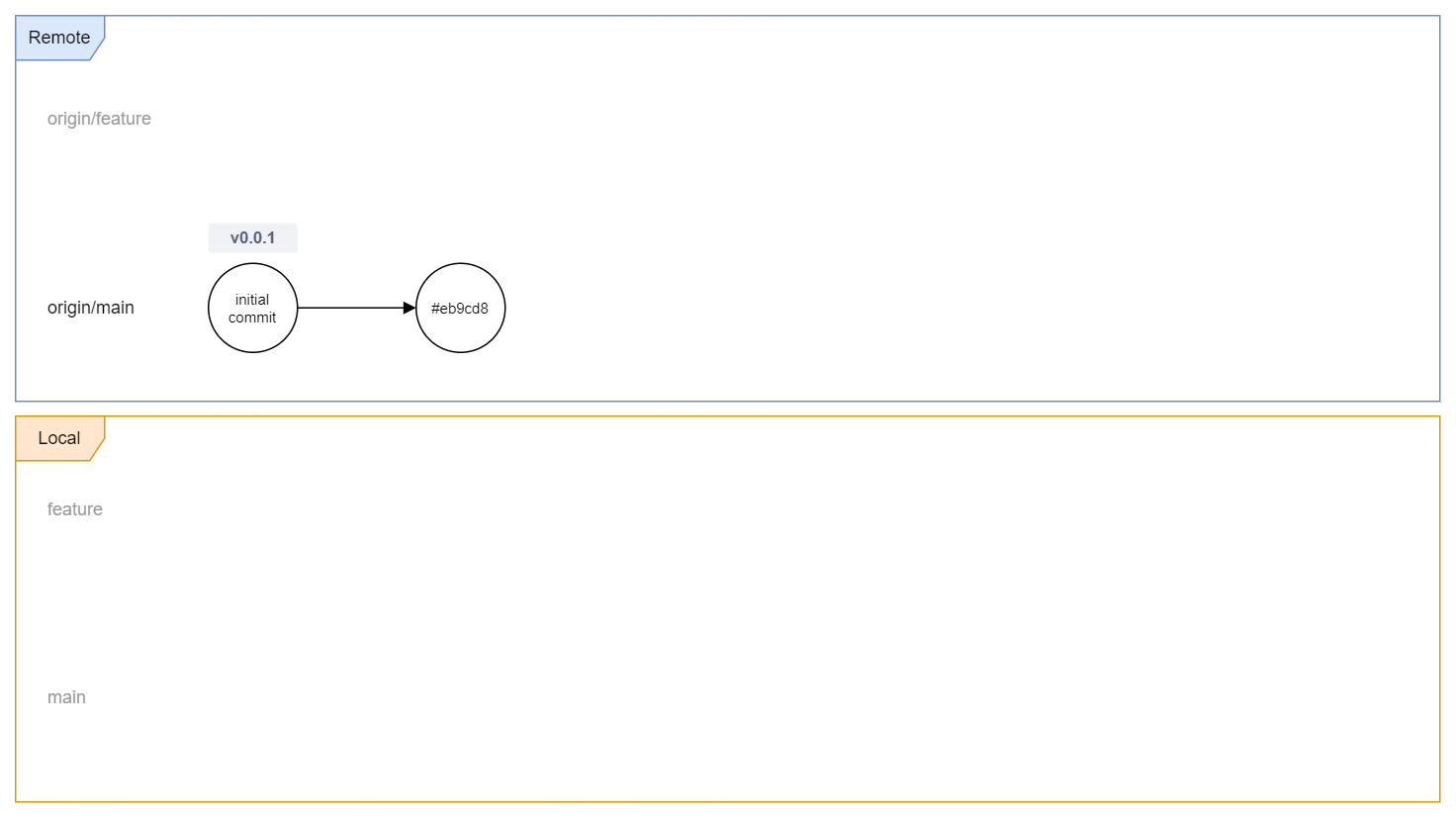 |
| 1: The target repo on the remote, with only a single commit to it |
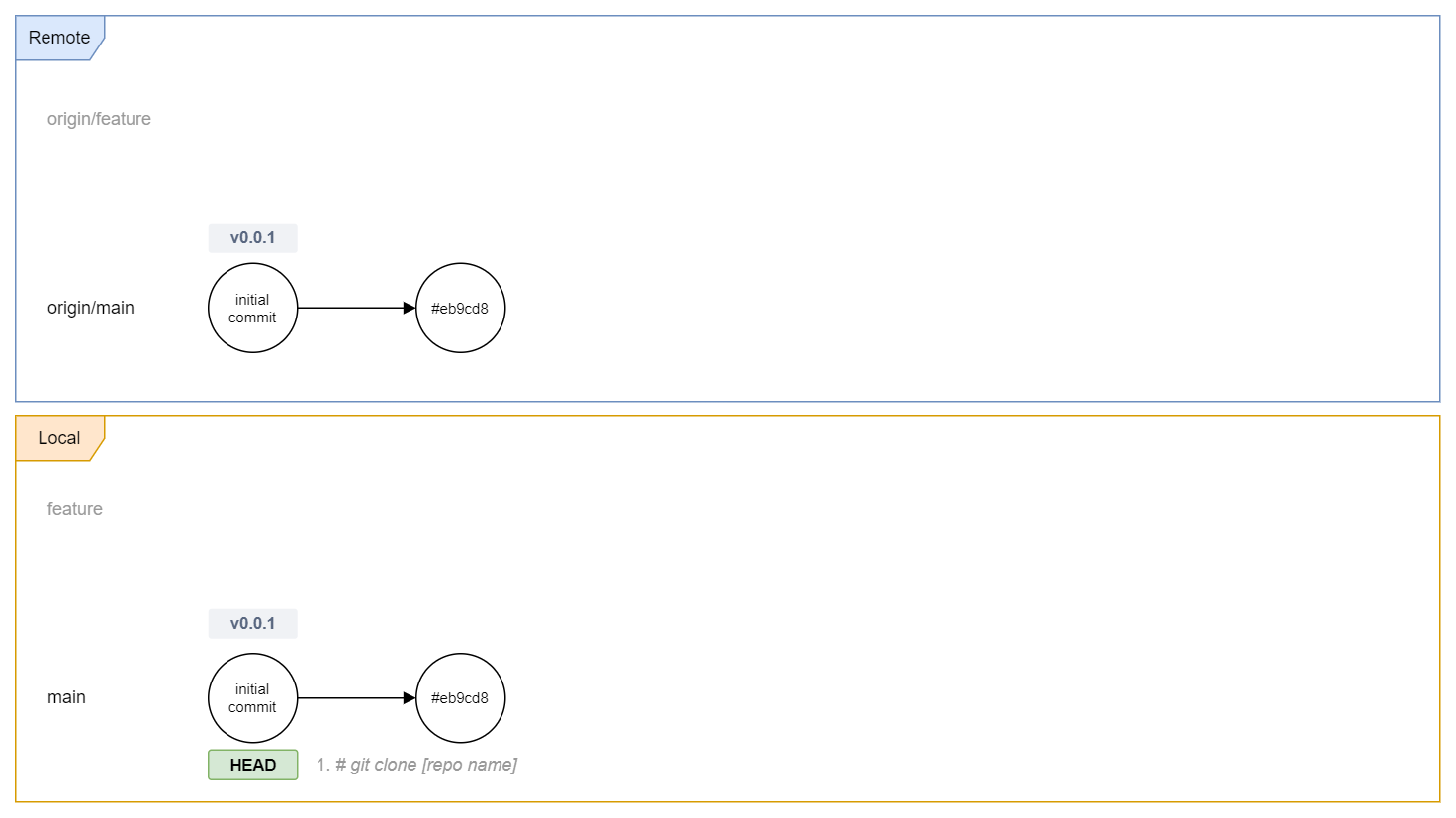 |
| 2: A local clone of the remote repo is made |
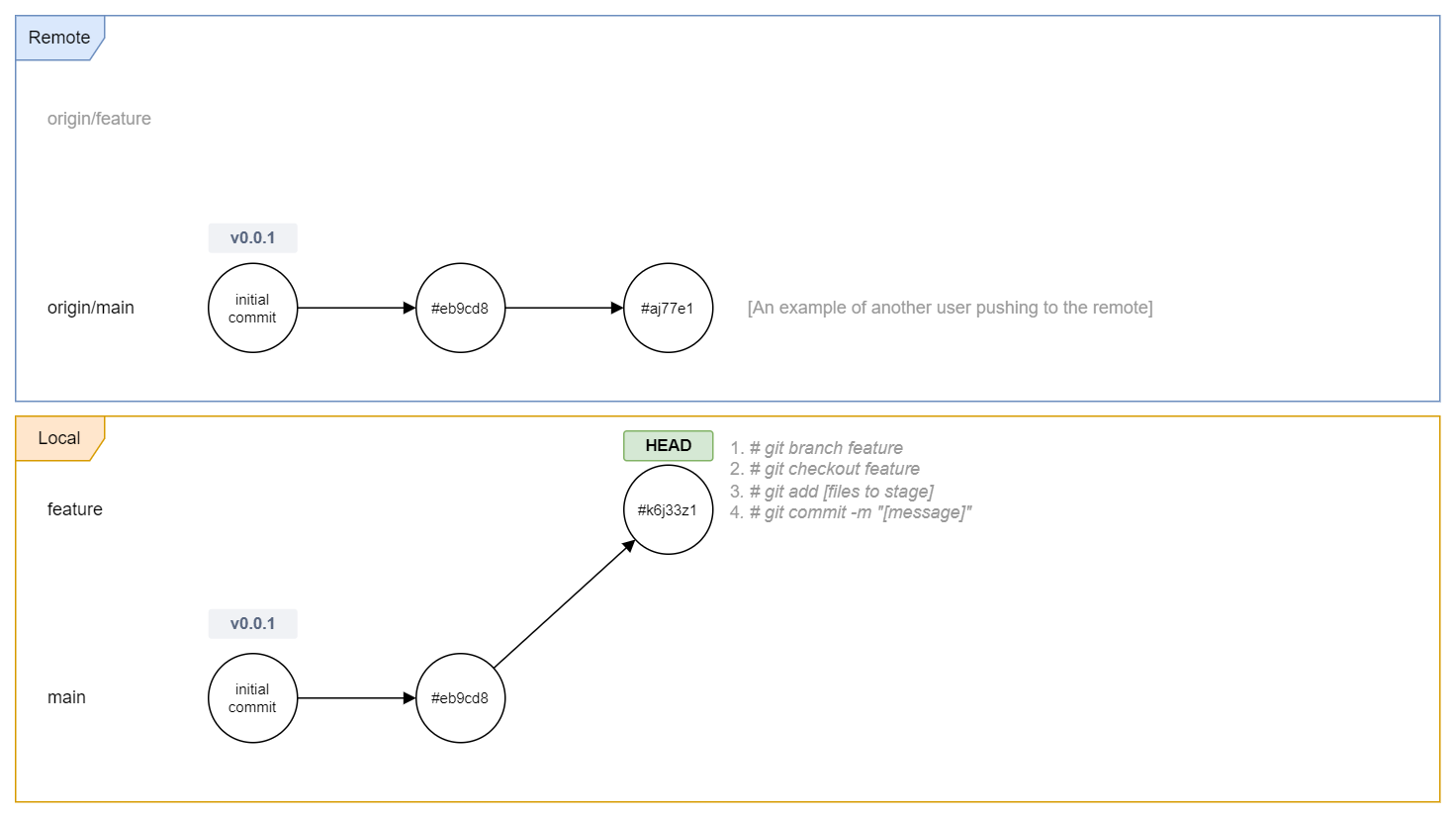 |
| 3: A branch named “feature” is made in the local repo. |
Worth noting however is that a new commit has been made to the remote repo, presumably by another developer
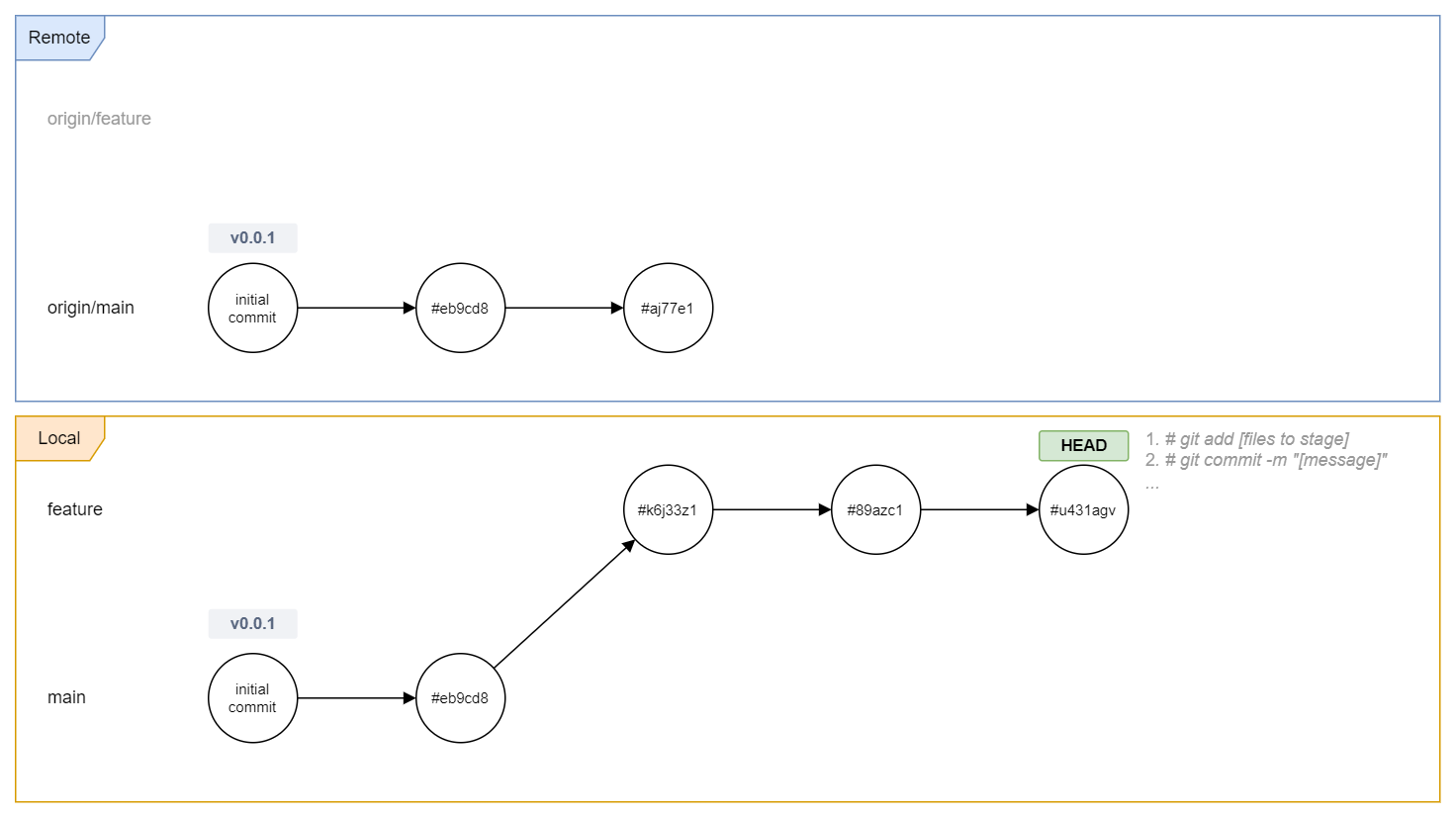 |
| 4: Three commits are made to the feature branch |
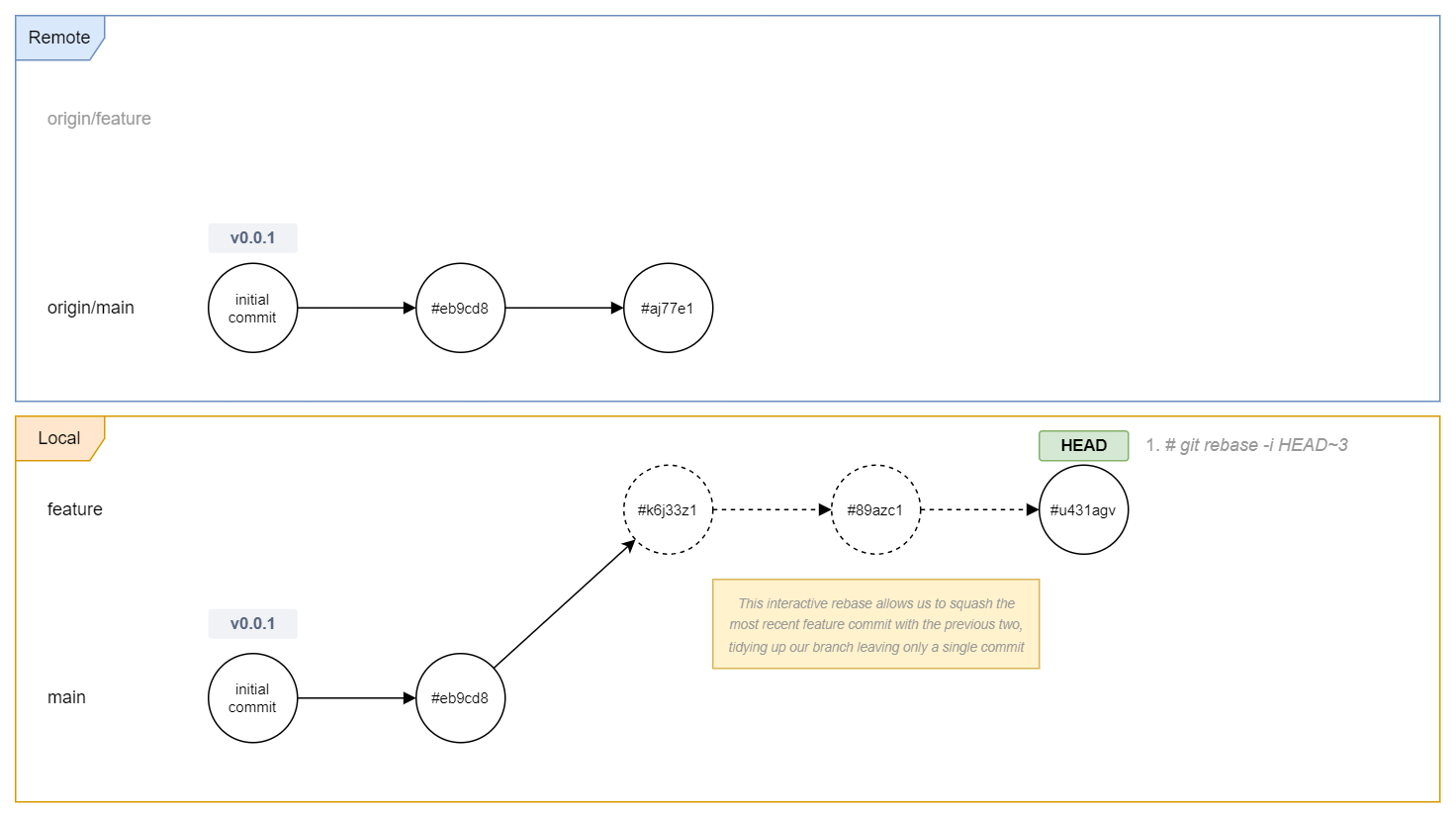 |
| 5: The feature branch is squashed using an interactive Rebase, condensing all commits of the branch into a single commit |
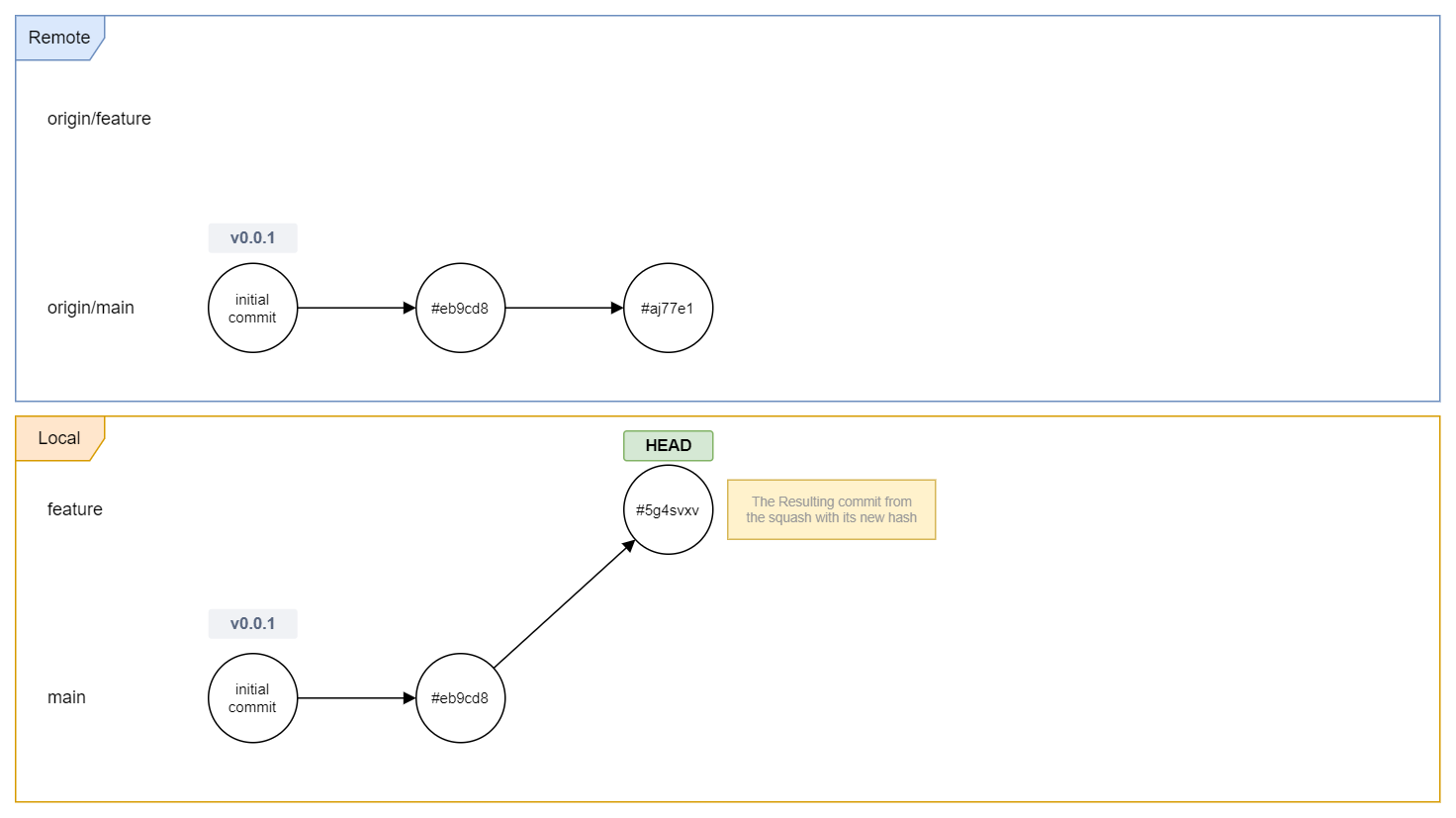 |
| 6: The resulting commit with a new hash |
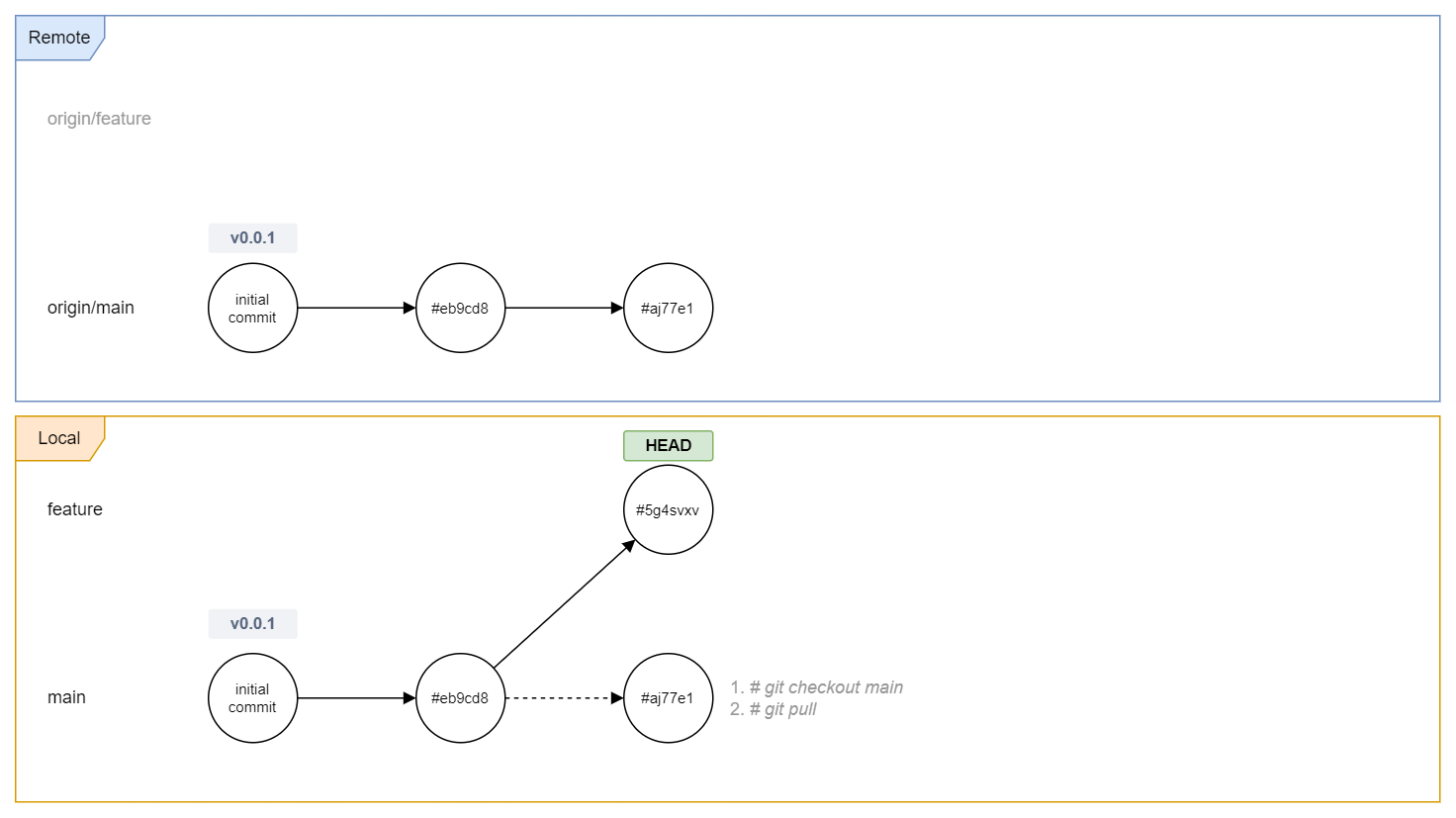 |
| 7: The HEAD is moved back on to the main branch, and changes from the remote repos main branch are pulled into our local main branch |
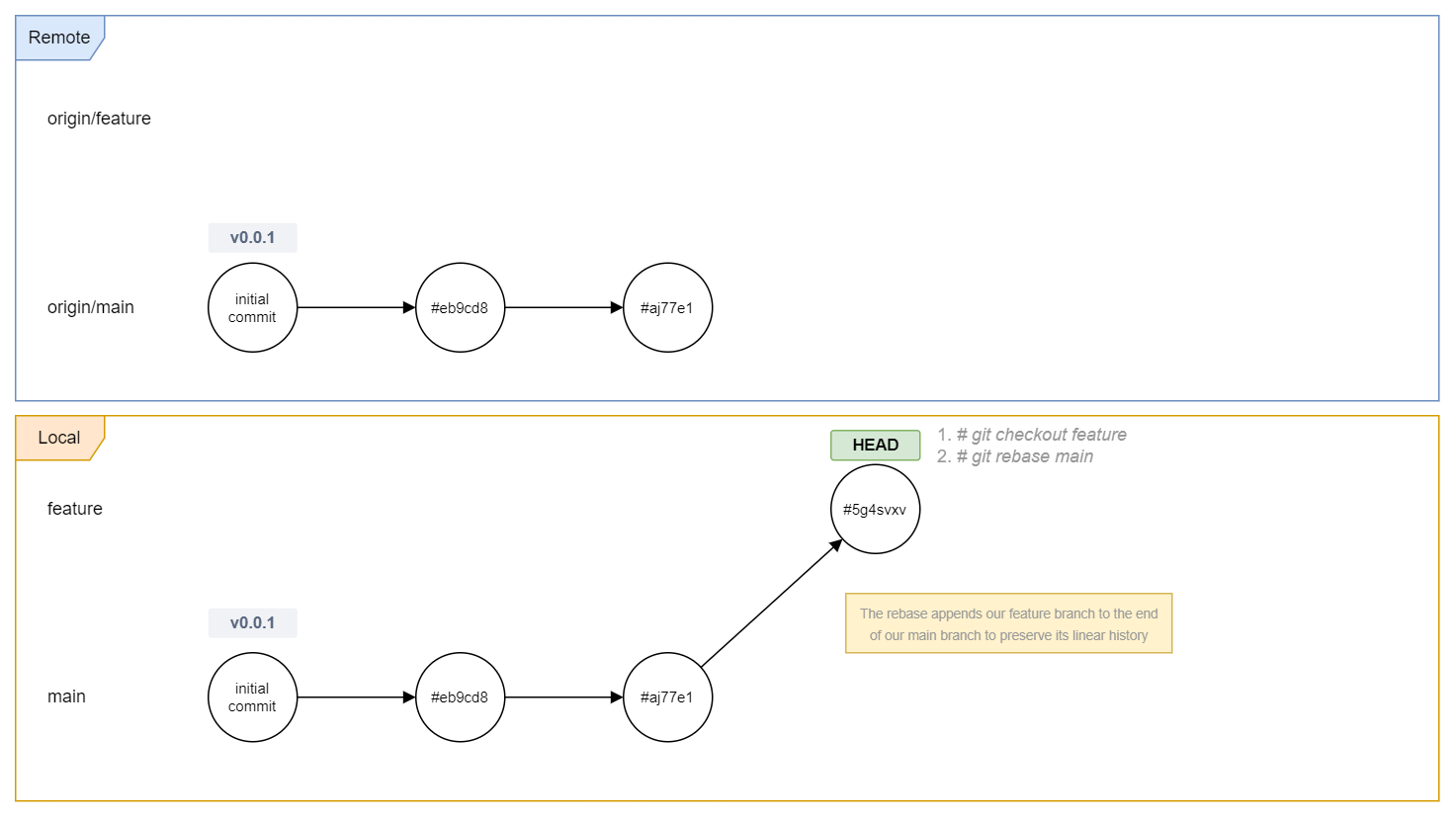 |
| 8: The feature branch is rebased onto the main branch, giving it a consistent, linear history with the additional commit from the remote, and allowing a fast-forward merge of the feature branch when pushed |
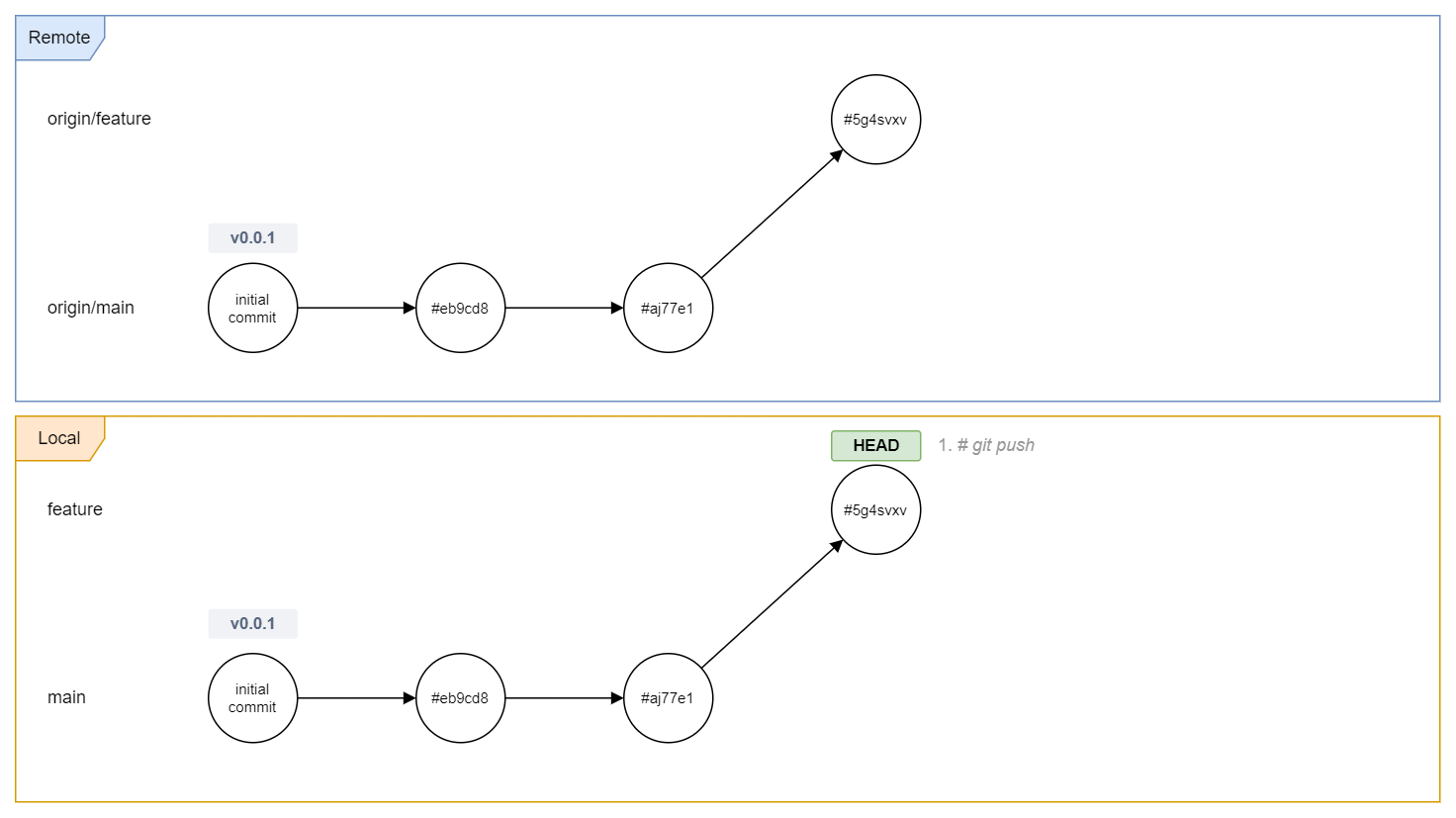 |
| 9: The local feature branch is pushed to the remote |
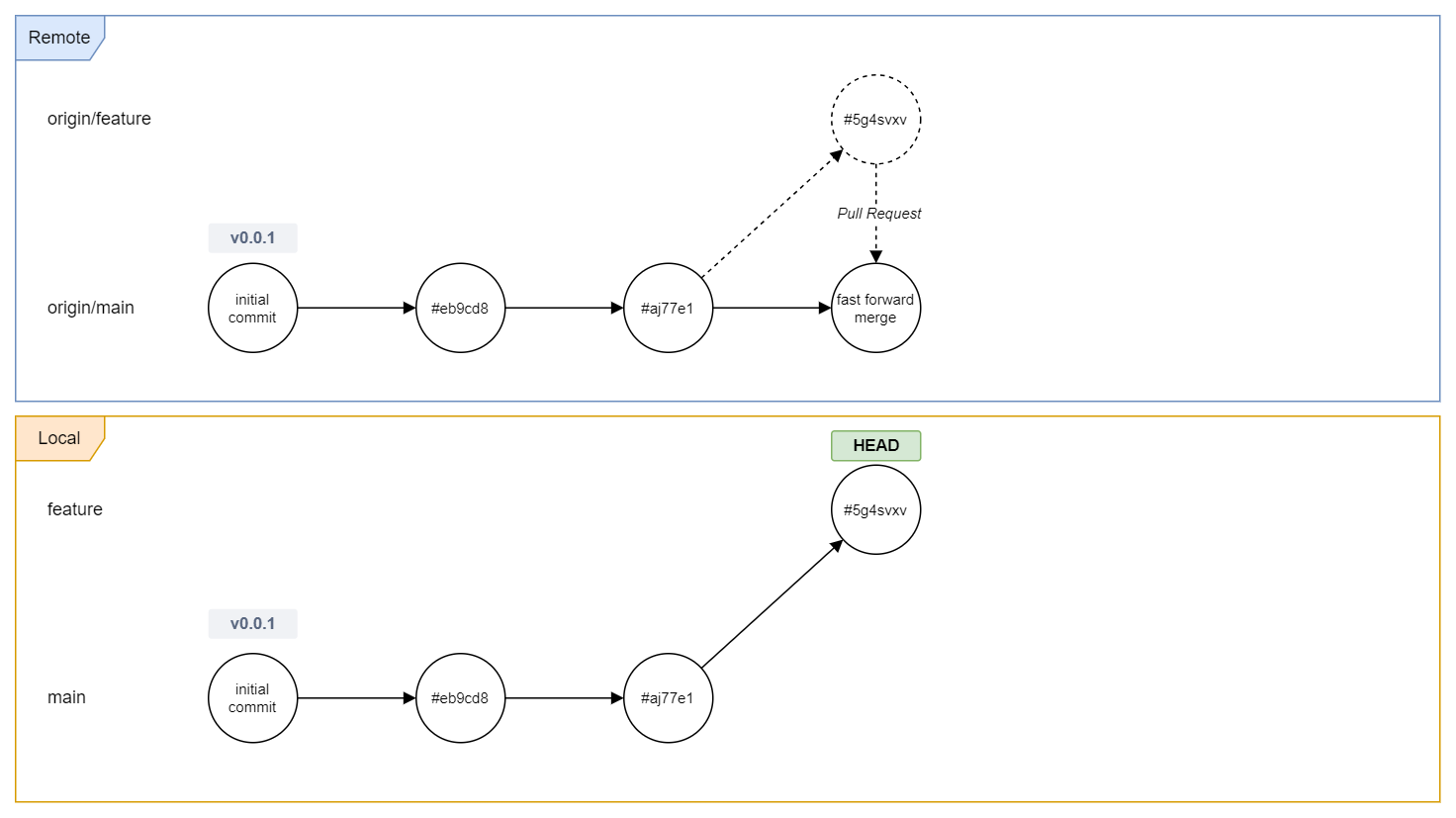 |
| 10: A pull request is made through BitBucket’s GUI, requesting the feature branch be pulled into the main branch of the remote |
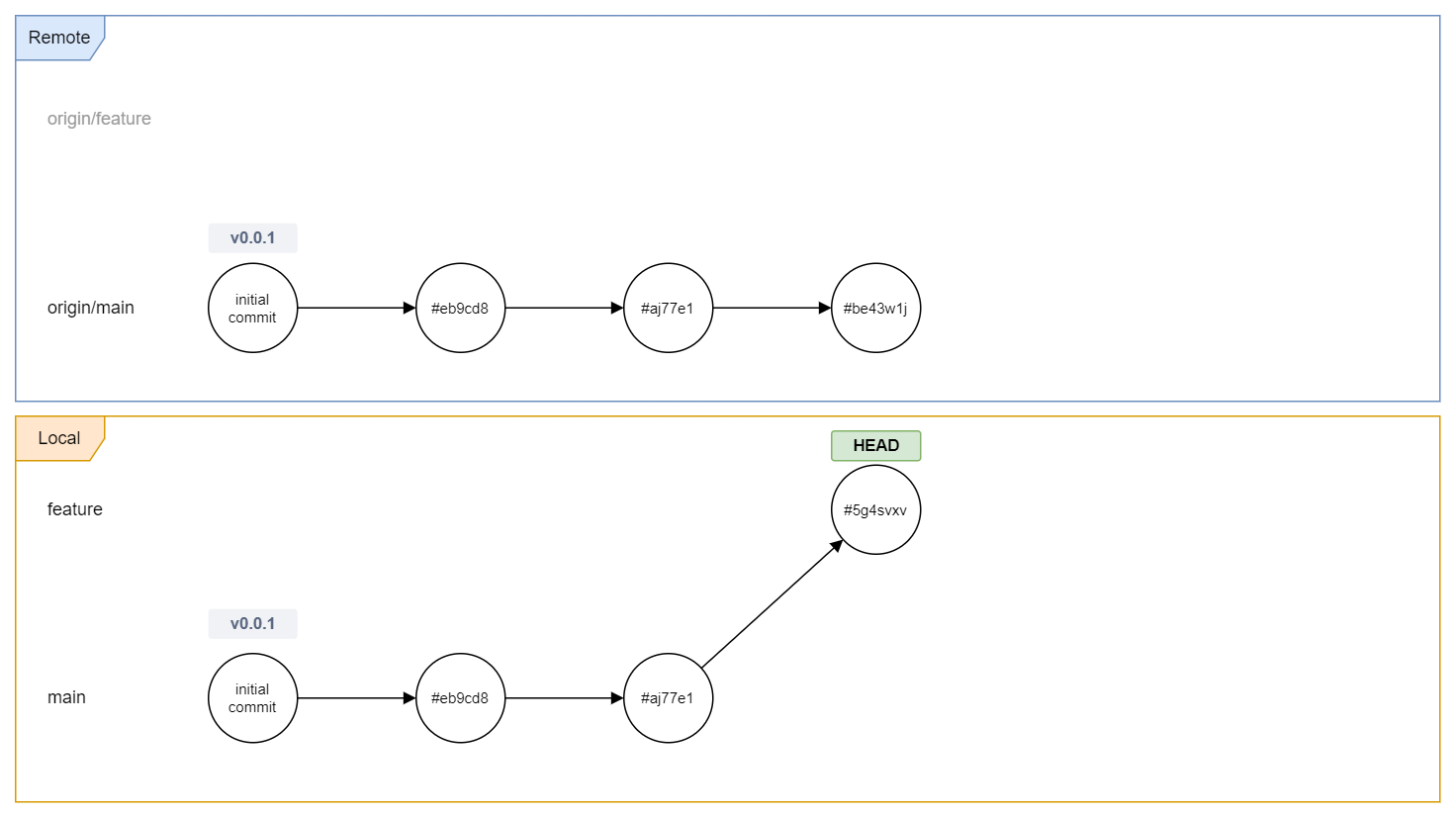 |
| 11: If accepted, a fast-forward merge will occur, merging in the feature branch into the main branch with a linear history |
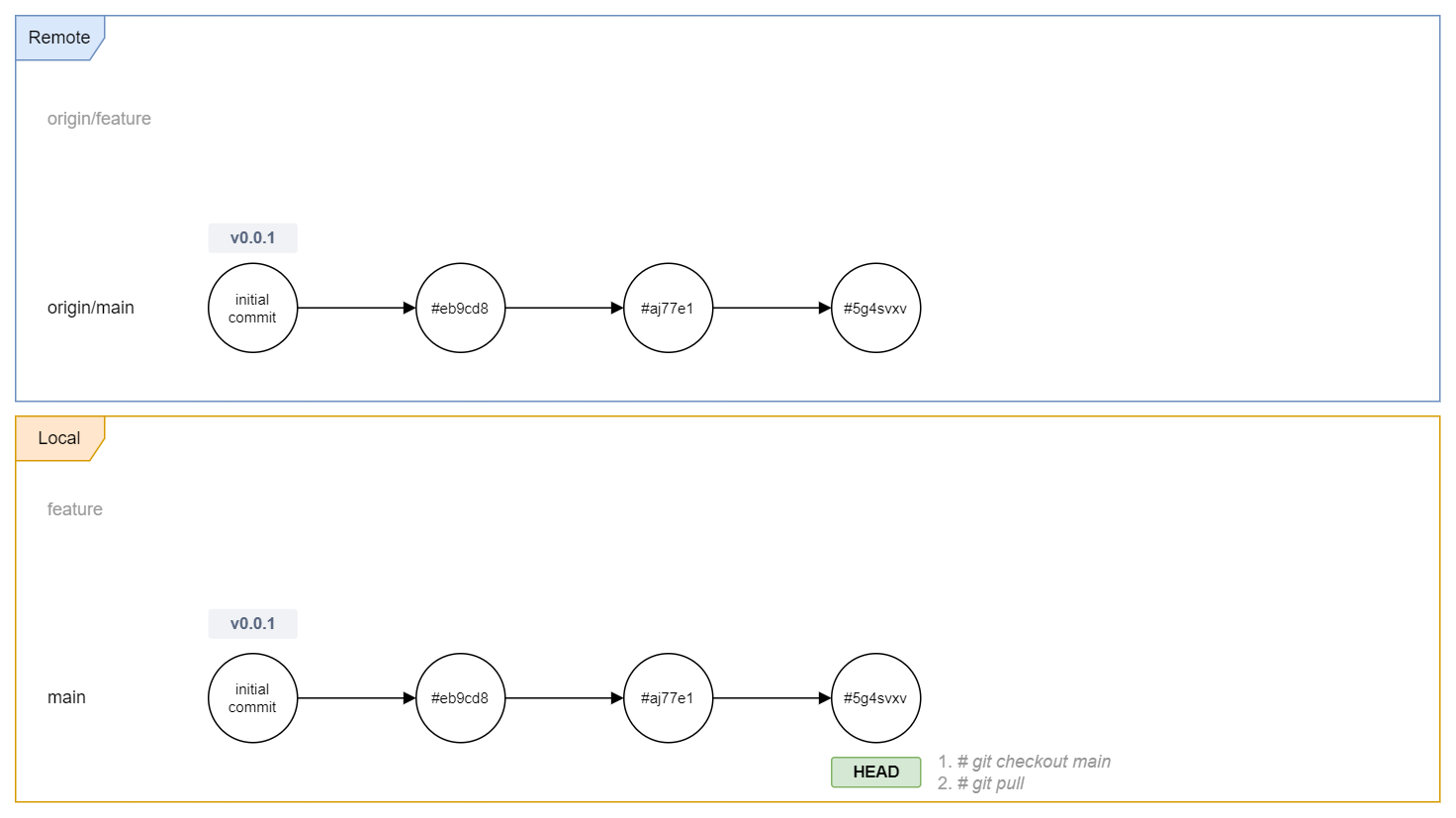 |
| 12: Like before, The HEAD is moved back on to the main branch, and changes from the remote repos main branch are pulled into our local main branch |
 |
| 13: A release is commenced from the local repo, creating a new version commit, which is then pushed to the remote |
npm run release
npm run release creates a new release, in doing so it will:
- Bump the version in package.json
- Output all correctly formatted commit comments since the last release to CHANGELOG.md
- Commit the changed files and tag the release using the new version
- Triggering the publisher pipeline again, but this time it will publish the new version to the CodeArtifact repository and subsequently to ConstructHub
End Module












